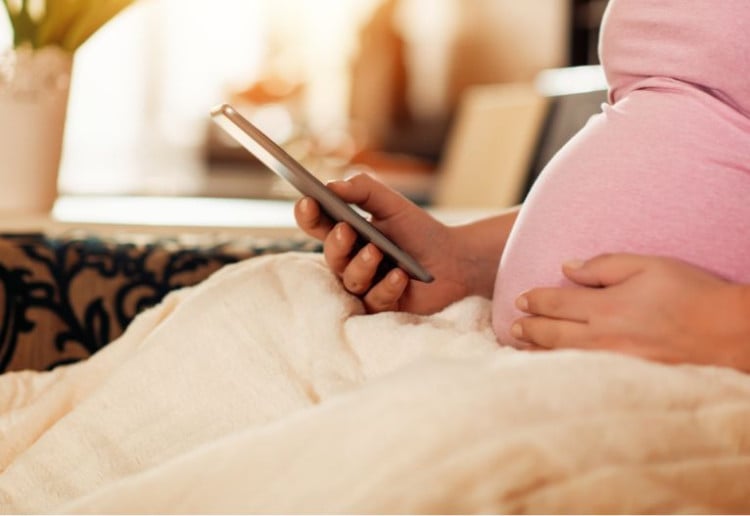BIG changes. BUT can the new guidelines on kids and screens really work?
There are big changes for families in the new recommendations to guide children’s use of anything with a screen, such as computers, tablets, mobile phones, televisions and video games.
In a bold move, the authorising body, the American Academy of Paediatrics (AAP), is dropping its most well known suggestion: no screen time before the age of two years.
The AAP guidelines now state that it is now OK for very young children to look at or talk to family members occasionally using a video chat program, such as Skype.
The new recommendations also say it is now OK for children aged 18 months to five years to watch some educational content as long as an adult is there to help them interpret and learn from the program.
A second important change to the guidelines is the removal of the two hour maximum time limit that children should spend on their device.
While the guidelines suggest that children aged 18 months to five years only spend around one hour per day, no suggested time limit has been given for children aged six to 18 years. Instead the responsibility has been passed to parents to decide what fits best with their family lifestyle.
Why the change?
The new screen guidelines will come as a welcome surprise to many parents who have struggled with outdated screen recommendations.
The previous guidelines were developed in the 1990s, well before iPads and apps were even invented, with the aim of guiding children’s viewing of television.
While they may have been relevant then, 30 years later many families have found it near impossible to keep within the limits. Not only have they found it difficult to count the minutes a child is on a device, but it is also difficult to limit that use when technology is threaded through so many parts of their lives.
The guidelines have also changed because they reflect the new understandings we have of the learning benefits that technology can offer children.
For example, recent research shows that quality and selective use of interactive devices can help children develop skills in problem solving and collaboration, that social media use can provide community support for young people with mental illnesses, and that children as young as 18 months of age – most of whom speak only in single word utterances – can use the (few) words they do know to learn new words when using a screen.
Are the new guidelines a good idea?
Many adults may feel that the new guidelines are a cop out.
There is a lot of research to show that kids are glued to their screens. Many parents may consider that guidelines with no time limits will exacerbate that situation, as will allowing children to use a screen from very early on in life.
But the new guidelines are not saying it is OK for kids to use their devices 24/7, or that we should prop babies up against an iPad or other tablet as a pseudo babysitter all day.
Instead they are saying to parents it is their responsibility to guide children.
The AAP acknowledges that the previous guidelines have been causing difficulties for too many families and that one size does not fit all any longer. The new guidelines are an attempt to begin a more individualised approach to managing the ways children use screens.
How to work with the new screen guidelines
This is a new approach for many families. Parents may feel somewhat daunted with knowing how to manage kids’ screen time, and to be sure they are doing it right.
There are some key messages embedded in the guidelines to support parents in guiding children’s screen use:
- Make sure your child has a balanced approach to technology. Technology use should not replace physical activity, sleep or spending time with others.
- Parents should take an active role in their children’s screen engagement. This does not mean not allowing your child to do anything independently on their device, but rather to be interested in what they do on there and provide hands on guidance.
- Take a planned approach to managing the time your child spends on a screen. Don’t leave it to chance every day.
While there will always be research to show the ills of technology, these guidelines send a good message. They encourage parents and children to engage with screen content together, and they encourage parents to be informed role models for children to use technology in a balanced and healthy way.
These attempts to help families think more strategically about what they want for their children are long overdue and are a move in the right direction.
The next move needs to be to make sure parents are meaningfully supported in their important role of guiding children’s screen use.
![]() Share your comments below.
Share your comments below.
Joanne Orlando, Researcher: Technology and Learning, Western Sydney University
This article was originally published on The Conversation. Read the original article.
Shutterstock photo
We may get commissions for purchases made using links in this post. Learn more.




















-

-
-
-
june11 said
- 04 Nov 2016
Reply
-

-
-
-
mum4107 said
- 02 Nov 2016
Reply
-

-
-
-
mom160421 said
- 01 Nov 2016
Reply
-

-
-
-
mom70876 said
- 01 Nov 2016
-

-
-
-
BellaB said
- 01 Nov 2016
Reply
-

-
-
-
mom93821 said
- 01 Nov 2016
Reply
-

-
-
-
mom64356 said
- 01 Nov 2016
Reply
-

-
-
-
mom112217 said
- 01 Nov 2016
Reply
Post a comment11:04 pm
6:24 am
10:11 pm
9:59 pm
-

-
-
-
mom93821 replied
- 02 Nov 2016 , 5:13 am
Reply8:32 pm
7:34 pm
6:03 pm
3:32 pm